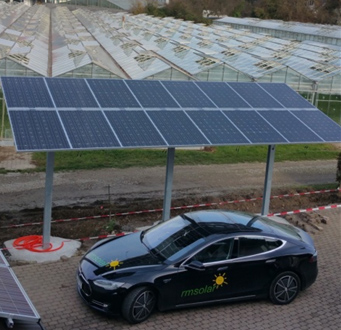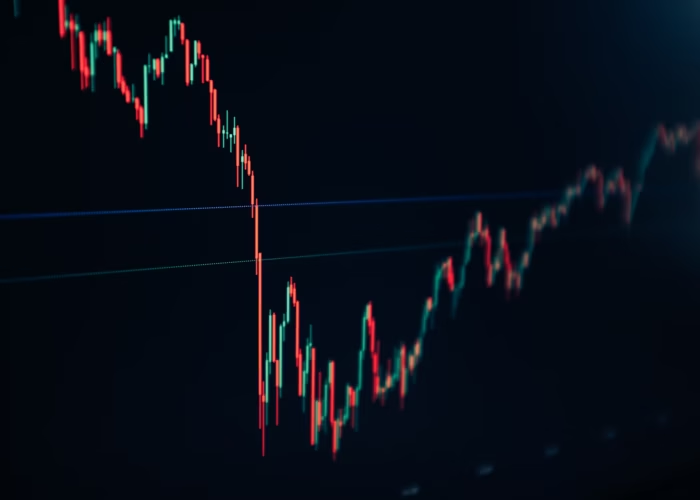
At first glance, the news that a bifacial system is showing an average 120% higher specific energy yield (kWh/kWp) averaged over one month seems to be puzzling, in particular considering the fact that no days with snow coverage are included in this analysis. In this blog we will provide some information that go beyond the headline and go deeper into the technical details in order to give explanations for some of the possible reasons for the unexpectedly high energy yield observed during the month of December 2015 on a bifacial PV system installed on an island on the lake of Constance (Reichenau Island, Germany).
Unlock unlimited access for 12 whole months of distinctive global analysis
Photovoltaics International is now included.
- Regular insight and analysis of the industry’s biggest developments
- In-depth interviews with the industry’s leading figures
- Unlimited digital access to the PV Tech Power journal catalogue
- Unlimited digital access to the Photovoltaics International journal catalogue
- Access to more than 1,000 technical papers
- Discounts on Solar Media’s portfolio of events, in-person and virtual
Or continue reading this article for free
The bifacial carport compared to monofacial reference
The story
Mrs. Schmidt (name changed) at the Island Reichenau wanted to have something special for her carport, as she was a long-term fan of the energy transition as well as PV and already had a 7.6kWp system on her roof. We suggested a bifacial BiSoN system for her – promising a fancy installation, longer module lifetime and an average gain of 10-15%. She was very happy and agreed. The system was installed and connected in November 2015 and looked extremely nice – as she said. After couple of weeks she was even more surprised as the additional 4.4kWp installation was far more powerful than her monofacial 7.6kWp installation – that surprised even us.
The details
The bifacial PV system, that showed the high yields during 12/2015, is composed of 16 bifacial glass-glass modules, 275Wp each, containing bifacial n-type cells (based on ISC Konstanz BiSoN cell technology) manufactured by MegaCell and installed by rmSolar and energydepot. The bifacial system, surrounded by many greenhouses, features a total nominal power of 4.4kWp and is shown in Fig. 1. As usual, also in this case, the nominal power of the bifacial module is measured under standard conditions (STC) by illuminating the front side only. Consequently, when we are talking about kWh/kWp, also for the case of bifacial modules, the kWp take into account exclusively the above-mentioned nominal (front-side) power.
As none of the PV systems here considered (monofacial references and bifacial system) have been conceived as demonstration plants but have been designed just to produce energy, none of them is equipped with systems for monitoring solar irradiance or I/V parameters on module level. Accordingly, the only data that is available is the respective kWh output (AC) of the inverter.
The Results
We collected the data for the kilowatt-hours produced per day by the south-facing bifacial PV system for a time period of almost one month (27 days), from 27 November 2015 through 23 December 2015. As a reference plant, we selected a monofacial roof-top PV system located at a distance of a few kilometers, also facing south. This data is summarised in Fig. 2 and the difference in Fig. 3.
The first graph shows the absolute values, indicating on the one hand that – as expected for a winter month at Lake of Constance – the level of solar irradiance is rather low according to the 25.4kWh/kWp produced by the monofacial plant during the month of December compared to its 1,083kWh/kWp total energy yield of 2015.
On the other hand, it can already be seen that on many days the specific energy yield (kWh/kWp) of the bifacial system is more than twice as high as the yield of the monofacial plant. The bifacial gain, indicating the relative additional energy yield obtained by a bifacial system compared to a monofacial reference system, shows a large variation from day to day: it ranges from ca. 0% to a maximum of 244%. At first glance, there seems not to be a systematic correlation between gain and level of solar irradiance (proportional to daily kWh/kWp yield). For a real analysis, data with higher timely resolution (e.g. every 15 minutes) will be needed for both systems. Considering the total amounts of energy produced by the two PV systems during the considered month, the bifacial system shows a specific energy yield (kWh/kWp) that is 122% higher than the yield of the monofacial system.
The explanation
From the details provided above, it is evident that the data available is not sufficiently precise for a scientific study and, therefore, there is a certain error margin the numbers for the bifacial system gain. Nevertheless, these data show that – on a system level and under certain meteorological conditions – a bifacial PV system can yield around twice as much energy as a comparable monofacial PV system under the same conditions.
From intuition and when looking at many simulations of bifacial PV modules that have been published, values for bifacial gain that are close to or even exceeding 100% seem to be impossible to achieve, in particular without involving extremely high ground albedo of more than 90%. One of the prerequisites for a high bifacial gain – a high diffuse fraction of the solar irradiance – is certainly present for the specific case discussed here: the weather conditions at Lake of Constance in December are determined by frequent periods of fog or low and dense clouds leading to an average fraction of diffuse irradiance usually exceeding 60% in December.
Another factor is the fact that, thanks to the additional diffuse light and the light reflected from the ground collected by the rear side of the bifacial modules, the Vmpp of the system is exceeding the minimum input voltage of the inverter earlier in the morning and going below this limit later in the afternoon leading to additional “productive time” on the AC side (kWh at inverter output) compared to a PV system composed of monofacial modules.
Fig. 4 shows the inverter behaviour for two following days of the p-type monofacial rooftop system. Because early in the morning and late in the evening the irradiance is low, the contribution to the overall daily (and monthly) energy production will be rather low. A further contribution to the additional energy yield of the bifacial PV system is supposed to be due to direct irradiance on the rear side of the bifacial modules. Also the temperature of the modules can be lower in the case of the carport and in addition the p-type roof system might have slightly degraded in time. For this reason we have looked at similar new systems close by which showed the same behaviours.
All these additional mentioned benefits for the BiSoN carport are in a range of maximum 5%. To summarise in bullet points all the possible gains for the bifacial system:
- lower temperature for carport (5%)
- converter minimum power (5%)
- degradation of p-type roof system (5%)
- additional light into the rear side (including direct light) (85%).
Conclusion and outlook
What initially was conceived just as a normal PV installation has become the subject of an interesting case study. Even if the 120% gain, observed in a winter month with a low global irradiance and a high fraction of diffuse light, is far from being representative for the overall yearly yield, still the level of additional energy yield obtained by this specific bifacial PV system was unexpected for us when looking at any other outdoor data of bifacial installations known to us and also taking into account the results from our simulation model. Consequently, for us, these results raise the question if our model used for predicting bifacial energy yield is underestimating the additional energy produced by such systems.
In order to answer this question, we are planning to equip this bifacial PV system with additional monitoring instruments in order to be able to record timely resolved (e.g. every 15 minutes) I/V data on module and on system level. As soon as such detailed data is available for a period of several months (covering more than one season), a deeper analysis can be performed, allowing for a better prediction of the yearly energy yield (overall bifacial gain) and giving indications for improving our simulation model. With this model similar installations like these could be predicted as well when, e.g. floating bifacial systems can collect albedo from surrounding water surface.






